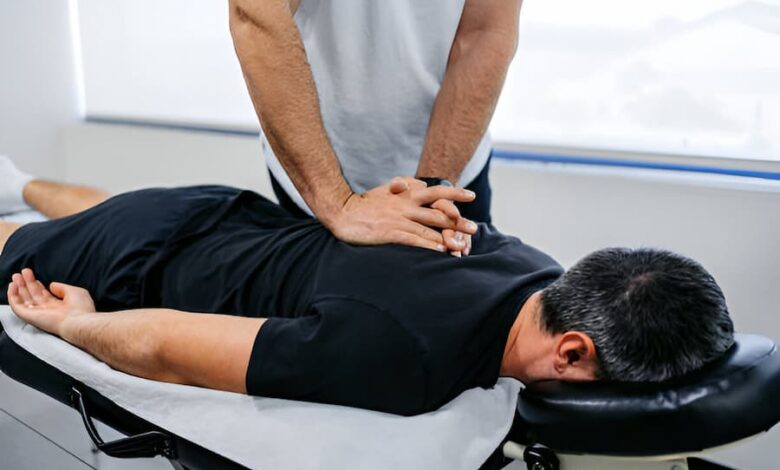What Are the Types of Deep Tissue Massage Therapy?

Introduction
A specialist type of massage meant to target the deepest levels of muscles and connective tissues is deep tissue massage therapy. Focusing on chronic muscular tension and regions of stiffness, this treatment approach helps one relax, increase mobility, and reduce pain. Each of the several forms of deep tissue massage therapy uses different techniques and approaches, although they are all customised to fit particular requirements. The many varieties of deep tissue massage techniques accessible are thoroughly explored below.
Types of Deep Tissue Massage Therapy
1. Sports Deep Tissue Massage
Designed to heal sports-related injuries and geared for athletes and active people, sports deep tissue massage is meant to prevent this treatment, which uses focused pressure on particular muscle areas to improve performance, ease pain, and hasten healing. Sports massage therapy Dover frequently includes stretching exercises designed to fit the particular athletic activity of the client. It is often utilised either before or after events to help in healing or to ready muscles for activity.
2. Myofascial Release Therapy
Targeting stress and stiffness in the fascia, the connective tissue around muscles and organs, and myofascial release treatment, therapists stretch and relax the fascia via gradual, steady pressure, therefore increasing flexibility and lowering pain. Conditions such as myofascial pain syndrome, persistent back pain, and fibromyalgia require this approach especially. Targeting trigger points inside the fascia, myofascial release treatment helps to restore normal function and reduces pain.
3. Trigger Point Therapy
Trigger point treatment zeroes in the muscles on certain tight areas, or “knots.” These trigger points can produce local pain or refer pain to another area of the body. Therapists alleviate tension in these locations by direct pressure—often with fingers or elbows. Those with headaches, regional muscular pain, or repetitive strain injuries will find this approach perfect. Deactivating trigger points helps the therapy improve circulation and hasten muscle healing.
4. Cross-Fiber Friction Massage
The deep tissue method known as cross-fibre friction massage opposes the grain of the muscle fibres. For scar tissue, adhesions, and increasing flexibility in damaged regions, this approach is especially successful. Therapists promote appropriate tissue alignment by repeatedly deep pressure over the muscle fibres, therefore accelerating the healing process. Tendinitis or ligament sprains are two common chronic disorders for which this treatment is employed.
5. Neuromuscular Therapy
Neuromuscular therapy- also known as NMT, which targets imbalances and dysfunctions in the musculoskeletal system—is a precise and focused deep-tissue massage therapy method that targets imbalances and dysfunctions in the musculoskeletal system. It covers nerve compression, ischemia—restricted blood flow—postural disorders, and biomechanical concerns. Therapists assist in reducing chronic pain and restoring appropriate function by means of targeted pressure and manipulation, therefore improving the connection between nerves and muscles.
6. Structural Integration Therapy
Often connected with Rolfing, structural integration therapy is a whole method for realigning the body’s posture and structure. This method restores balance and symmetry by means of extensive manipulation of the connective tissues. Structural integration treatment increases general well-being, lowers pain, and improves mobility by treating the whole body instead of individual muscle groups. Those with a restricted range of motion, poor posture, or persistent pain particularly benefit from it.
7. Bamboo Deep Tissue Massage Therapy
Therapists who give deep tissue massage therapy using this creative method utilise warmed bamboo sticks. Rolling the sticks over the muscles gives constant pressure to release tension and stiffness. The heat from the bamboo facilitates more efficient release of tense muscles and improves relaxation. Those looking for therapeutic advantages as well as leisure in one session will find this type of massage perfect.
8. Manual Lymphatic Drainage (MLD)
Manual lymphatic drainage can include deep tissue treatments even if its main focus is lymphatic flow. In congested regions, this treatment helps to clear toxins, lower edema, and increase circulation. Therapists gently but firmly activate the lymphatic system while also releasing underlying muscular tension.
9. Ashiatsu Deep Tissue Massage
With Ashiatsu, often known as “barefoot massage,” the therapist applies deep, wide pressure using their feet. More significant compression is made possible by this approach, which targets deeper muscle layers. Therapists applying exact, controlled pressure may employ overhead bars for support. Those with more muscular mass or those who need great pressure to alleviate chronic stress would especially benefit from Ashiatsu.
10. Therapeutic Stretching with Deep Tissue Massage
Deep tissue treatments used with either active or passive stretching form this hybrid approach. This treatment increases general mobility by elongating muscles and breaking down adhesions, therefore improving flexibility and reducing stiffness. Those recuperating from injuries or suffering tightness from extended inactivity or repeated strain will find it very helpful.
Conclusion – Massage Therapy
Deep tissue massage therapy consists of a broad spectrum of techniques used to treat certain problems and disorders. Knowing the several forms of deep tissue massage therapy will enable you to select the best one whether your needs are for general muscle relaxation, healing from an accident, or relief from persistent pain. Working with a qualified therapist and using the correct technique will help you to benefit from this effective and transforming treatment fully.
Visit Paid Services for more informative blogs.




